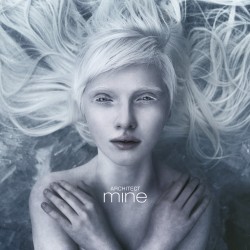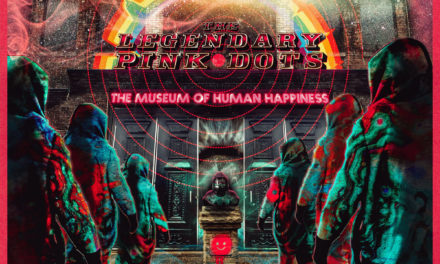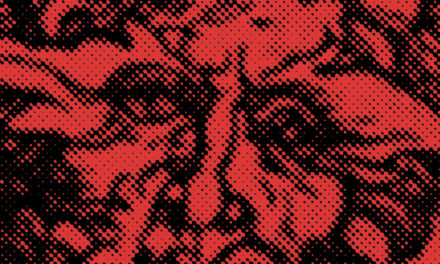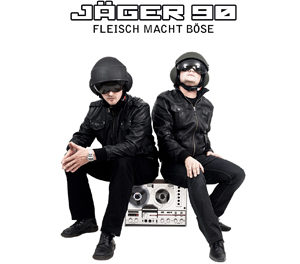Architect
Mine
Hymen/Artoffact
Daniel Myer enjoys a special reputation within Our Thing: the rarified and nigh universally agreed upon title of bonafide genius, at least insofar as tastemakers and other musicians would have it. Between his seminal work with Dejan Samardzic as Haujobb, his stint as member and then sole proprietor in Cleen/Cleaner/Clear Vision, his broader club moves in Destroid/DSTR, his various one offs and collaborations, his stint in Covenant, and work as a remixer he’s had an enviably consistent career. The mark of his work is and has always been the combination of deep production chops and songwriting aptitude, the musical auteur skillset where each tool becomes completely intractable from the other.
While not the the most well-known, the most “Myer” of all the DM projects is Architect, a mostly instrumental entity that has pinballed between stately IDM, drum and bass, abstracted techno, and whatever other sounds were interesting him at the time. While never as focused or as conceptual as some of his other endeavours, it’s always felt like a fairly pure expression of where he was at musically, and what he was interested in creating at a given moment in time. 2010’s Consume Adapt Create found him at a seeming peak, restlessly flipping between breaks, cinematic textures, and intricately programmed sequences shaped as much by instinct as design. It was a great record, and arguably the most important in his solo catalogue: a statement about where he was and what he was capable of.
Enter 2013’s Mine. Still a product of Myer’s ongoing dialogue with various forms of electronic composition (and notably bass music), the record explores one important part of Architect that has always been alluded to rather than openly addressed. Namely, soul. Far more than anything, anything Daniel Myer has ever been involved with, Mine bypasses digital and analogue concerns, plumbing deeper currents of musicality then we’ve ever heard from him. That isn’t to say that Daniel hasn’t always been a capable creator of songs; moreso it’s to point out that the album is uniquely and unquestionably different than anything he’s done before, in the best and most intriguing way possible.
It’s tempting to ascribe this change in Architect’s effect on the listener to the addition of vocals, an element which had previously been largely absent (Maurizio Blanco from Klangstabil provided some vox on Consume Adapt Create). While Emese Arvai-Illes’ vocals do bring something wonderful and new to the table (more on that later), it’s apparent right from instrumental opener “Altitude” that something about Mine is very different. While the masterful sound design that is Myer’s calling card is on full display, it’s the simple but aching and full-on beautiful chord progression underlying the track which cinches it. Almost like an underwater (or mile-high) version of Bowie and Eno’s instrumental collabs on the second side of Heroes, “Altitude” presages just how much emotional punch Mine delivers without uttering a word.
The shimmering, gossamer feel of “Altitude”‘s production is carried forward, with certain tracks recalling other periods or projects of Myer’s, but with a new, almost ethereal sense of reflection. “Freaks” feels like it could have begun as one of Cleen’s tense and immediate club numbers, but has been given enough time to both mellow and grow more complex, with various leads and accents rising out of its soft but beat-forward foundation, only to fade and yield to other permutations of the same core structure. “The Sun” follows Consume Adapt Create‘s “For You” quite closely, but again, flips some small internal switches to make things feel less fraught, more solemn; less reactionary, more contemplative.
Mine also marks the emergence of whole new types of tunes within both Architect and Myer’s oeuvre, though there isn’t a single moment when Mine doesn’t feel like a flowing, continuous whole. The almost purely ambient “Bencq” (a reference to collaborator Ben Lucas Boysen of Hecq) might feel like an incidental bridging piece at first pass, but the subtleties of its warm, simple spacey lead become more and more compelling after multiple listens. “Set My World On Fire” feels like a return to the heady mid-oughts, when the word “dubstep” conjured artists like Burial and Pinch to mind instead of energy drinks.
Before listening to Mine, one might be forgiven for thinking that Myer’s enlistment of Arvai-Illes of Black Nail Cabaret on multiple tracks recalls his team-up with Victoria Lloyd (Claire Voyant) for the HMB project, but these vocals and compositions are of a completely different cast. Earthy yet commanding, Arvai-Illes is alternately recalcitrant and smoldering, weaving menacingly over slow-burners like “Closer”, quietly flitting through the minimal “Immaterial”, and cautiously pointed on the tweakier “The Mountain Top”.
This collaboration undeniably reaches its peak with “Hummingbird”. As arresting as any song released this year, the soft and simple opening instrumental conjures thoughts of Haujobb’s legendary pop ambient swerve ninetynine before Arvai-Illes’ otherworldly voice enters to jaw-dropping effect, the whole of the song shuddering from pure emotional import. Framed against the rise and fall of orchestral elements and an alternatingly removed and vamped female voice, “Hummingbird” is climactic and explosive, the intimacy of a whisper projected across an enormous canvas that stretched across vast distances. It speaks volumes as the precursor to the intense reprise of “Altitude” that features Comaduster’s Réal Cardinal on vocals and sound design that closes the disc, the culmination of everything Architect has been and is in this moment.
It’s worth noting that there are essentially two versions of Mine, the CD released by Hymen and the double LP as released by Artoffact. The latter version resequences a few songs and adds an additional 3 numbers that effectively change the album, adding a sprawling element that bridges the Architect of years past more explicitly with today. “Glazart (2010)” is actually key in that transition, leading off with crushed drums and samples before opening into syncopated beats that wouldn’t have felt out of place on a previous Architect record, eventually opening into an enormous orchestral build that slots perfectly into the heart-on-sleeve nature of the album. Insofar as any record can exist as the artist intends in the era of iTunes shuffle and track by track downloads Mine is remarkably protean, with either official release fulfilling the artist’s remit.
As we hope has been apparent over the course of this write-up, it’s the emotional punch of Mine which has made it the sort of arresting listen which demands all of your attention from the second it begins. Each of its elements – the sound design, vocals, and stylistic choices – all operate in service of Mine‘s undeniable pull on the listener. That it so often accomplishes that with such a light and deft hand, bringing the less-is-more work of David Sylvian, Ryuichi Sakamoto, and Brian Eno to mind just as readily as Myer’s contemporaries in industrial or IDM speaks to its range and (we hope) its potential to introduce Myer’s work to a wider audience right when it seems to be experiencing a whole new surge in power and possibility. Mine is a huge leap forward for one of electronic music’s brightest lights, and a strong contender for album of the year. Highest recommendations.







I’m not sure I like this new album, to be totally honest … it’s kind of growing on me, but i still feel let down after the brilliance of “Consume, Adapt..”
It feels like a cross between Conjure One and Delerium at their height .. but something feels like it’s missing… not quite sure what it is